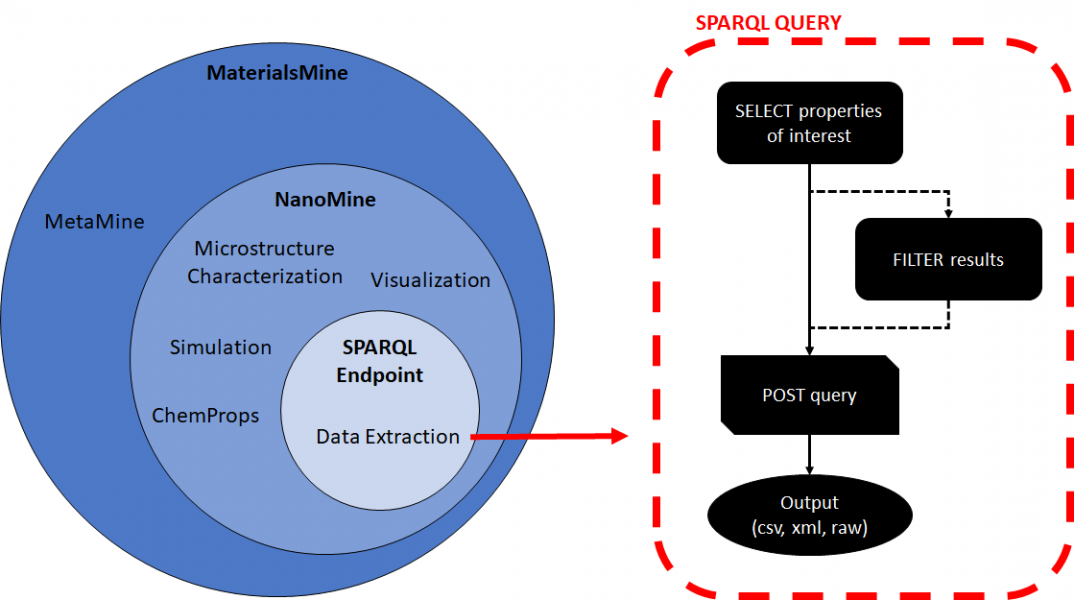PNC Fabrication and Predictive Machine Learning
PNC Fabrication
Polymer Nanocomposites (PNCs), a material system comprising a polymer matrix impregnated with nanoscopic rods, spheres, or other fillers, have been the target of much study in recent years. They exhibit many interesting properties that greatly expand the range of performance achieved by traditional filled polymer composites. Even small volume additions (<5%) of nanoparticles are able to produce the equivalent effect of much higher additions (15-40%) of macro-scale composite particles1. In addition, certain types of PNCs are able to alter existing polymer systems, providing new bulk properties, such as improved fatigue resistance2, high electrical conductivity3, and thermal stability4, that would not otherwise be possible. The result is the generation of a highly versatile material space with potential applications in aerospace, consumer-industrials, biomaterials, and more.
Due in part to their inherent properties, the study of PNCs necessitates the use of complex fabrication and characterization methods. For example, during the fabrication of polystyrene (PS) silica PNCs there is the possibility of significant agglomeration of the silica nanoparticles at the microstructural scale. This type of agglomeration may diminish the strength of property-enhancing effects provided by the filler nanoparticles and should be avoided5. These processing issues are being explored as part of a new research project on the study of how particle dispersion affects the thermal properties of various PNCs.
Predictive Machine Learning
As part of the AI for Understanding and Designing Materials National Research Traineeship (aiM NRT), I operate my research at the intersection of materials science and artificial intelligence. More specifically, I am interested in predicting the thermal features of PNCs, such as the change in glass transition temperature, ∆Tg, as a function of synthesis parameters. By utilizing a materials database such as NanoMine, it is currently possible to identify predictive trends for many different types of PNC.

Active Researcher on the Project:
Relevant Publications